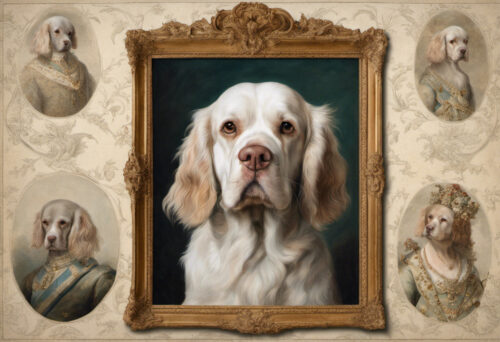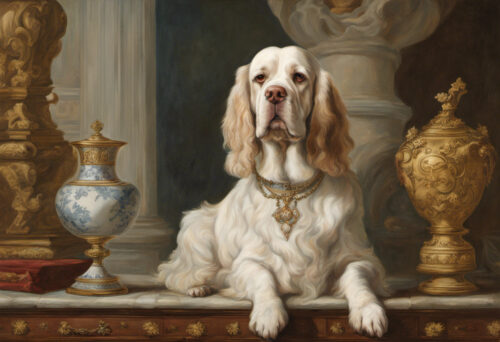Descendant of the British elite and known for its calm and affectionate nature, the Clumber Spaniel, a breed that encapsulates both pedigree and charm, has a history as rich and captivating as its demeanor.

The Origins: Rolling Back The Years
Believed to have originated in late 18th century France, the Clumber Spaniel’s history traces its roots back to the French Revolution. Legend has it that the breed was smuggled out of France and found refuge at Clumber Park, a sprawling estate nestled in Nottinghamshire, England, owned by the Duke of Newcastle.
A Royal Affair: The Clumber Spaniel’s Aristocratic Journey
Being one of the spaniel breeds with royal roots never goes unnoticed. The breed garnered significant attention during the reign of Queen Victoria. So much so, her son King Edward VII, kept Clumber Spaniels as his hunting companion when he ascended the throne.

Characteristics and Personality Traits
Originally bread as a hunting dog, the Clumber Spaniel has a sturdy and powerful look. Despite not being as fast as its other Spaniel counterparts, they are excellent and relentless trackers renowned for being extraordinarily diligent workers.
The Modern Clumber Spaniel: Making Its Mark
Today, Clumber Spaniels are known less for their hunting prowess and more for their laid-back temperament, proving to be perfect family pets. This breed is known to get along well with children, and their sociable nature means they mingle beautifully with other dogs too.

Caring for Clumber Spaniels: Tips for Potential Owners
Despite their calm demeanor, Clumber Spaniels need regular exercise to keep fit and healthy. They are susceptible to certain health issues, so regular checks to the veterinarian are a must. Potential owners should ensure they have enough space to accommodate the breed’s size and energy levels.
In conclusion, the Clumber Spaniel originated from nobility, not just from their physical looks, but also from their noteworthy lineage. If you are considering owning this breed, remember that you’re not just getting a pet, but a fascinating piece of royal history.
